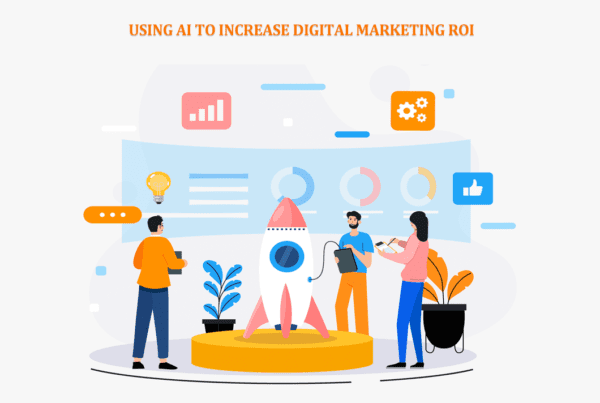Search intent demonstrates what the user wants to find on the web when using search engines. More than just keywords, search brings the desire to solve a need – and SEO professionals must unravel it to create more relevant content. Here’s how that can help SEO!
Do you think SEO is purely technical because it involves robots, codes, and algorithms? That part of optimization is essential for ranking. But there is a more human and subjective stage that underlies the entire strategy: understanding people’s search intent.
Users go to Google because they want to find answers, therefore, all research leads to the intention of solving a question. However, these intentions are not always obvious, as each person uses different keywords to try to find an answer.
That is why one of the great efforts of search engines is to understand human language to interpret people’s search intent. With this knowledge, robots can search the index for content that best meets users’ needs.
And that’s where the subjective part of your SEO and Content Marketing strategy comes in.
You also need to understand people’s search intent to deliver what they want to find, so that Google recognizes that you have the best answers and deserve the best positions.
Do you want to better understand what the user’s intention is and how to interpret their searches? Keep reading that we will answer all your questions!
What is the search intent?
Search intent is what the user wants to find when searching on engines such as Google, Bing, Yahoo, Youtube, or others.
A search for “yoga for beginners”, for example, brings with it the intention of the user to find classes, tips, and poses for those who want to start practicing yoga.
That may seem obvious, right? But it is this understanding of what is behind the search terms that allow us to plan the production of content that meets the needs of our buyer personas.
This understanding is necessary not only for Google but also for YouTube, social networks, and other Digital Marketing channels that have a search engine.
In all of them, what the navigator writes in the search bar is not just a keyword, but the intention to find answers to their questions and needs.
The searchers serve to answer questions either on the prices of a product, or the best restaurant nearby. So each search represents the goal of finding some answer. In general, these intentions can be divided into three main types.
Navigational
The user already knows where they want to go, but uses the search engine as a shortcut to get there. This happens, for example, when you type the name of a brand to visit its website.
How does search intent influence SEO?
In the examples above, you can see that Google returns results in different ways for each search.
That’s because the search engine strives to understand users’ search intent – not just the keywords they type – and to provide responses with the content and formatting that is most relevant to them.
That effort by Google is evident in its algorithm updates. BERT was the latest update in that regard and represented a significant evolution of the algorithm in natural language processing, in order to understand how humans express themselves.
From now on, understand the meaning of words, the relationships between them, and the nuances of human language.
With this update, it becomes clear that what matters to the search engine is not exactly the keywords that users type, but the meaning they build together. This sense, then, is the one that evidences the search intent of the users.
It is advisable to consider Google’s change in your SEO strategies. After all, professionals in the field have gotten used to optimizing content with keywords in mind.
The mission was to identify the words that people used to find certain content and to know the ideal volume of repetition of those terms on their pages. Therefore, Google would relate the user’s search to the content and would prioritize that page in the ranking.
Notice how that approach puts the user aside to focus on robots. Turns out, Google doesn’t want that anymore. If the search engine no longer attaches as much importance to the correspondence of keywords but to the meaning they express, the SEO approach must also change.
From now on, you must ask yourself: what does this user really want to find when doing this search? People want answers, not keywords. Therefore, you must meet the needs of the user, not the robots.
It is that theme that should guide your SEO Content Marketing planning, from keyword research and setting guidelines to content production.
How to reveal the search intent behind a keyword?
Keyword research is one of the main SEO planning tools. That step in the strategy is to identify search terms with the potential to drive visitors to your site.
With these terms in your hands, you can define the guidelines for producing content and use them on all pages.
Even with the shift in focus to search intentions, that tool is still important, only now you need to go beyond a simple search for promising terms.
You must understand the intent behind each keyword with the potential to generate results that you identify for your business.
First, you can use your human ability to put yourself in a person’s shoes and try to understand what they would like to know. After all, you are not a Googlebot that needs a complex algorithm for this. Just use empathy!
But you can also understand the intentions by asking Google itself. Type in the search engine the keyword you are working on and see the results.
At the top are the links that Google considers to be the best responses – that is, the ones that best serve your search intent.
Thus, those first results can be a guide for your content production. Understand the topics they address, how they structure the content and what formats they use, and identify areas for improvement that you can explore in your article. So soon, it is your website that will appear in those top positions!
How to optimize content for search intent?
After keyword research, you already have some potential terms under your control. So to develop and optimize your content, it’s time to look at the intentions those terms represent and what goals they help achieve at different stages of the sales funnel.
Let’s say, for example, that many users come to your site in search of “Digital Marketing”. That term is generic and tends to drive a lot of traffic, but not as many conversions.
Probably the people who do this search have an informative intention, to know more about the subject, still far from a conversion, from a purchase decision – that is, they are at the top of the funnel.
Although there is an intention, it is still not clear if the navigator wants to know the concept of Digital Marketing, look for courses on the subject or hire an agency, for example.
What are you going to do with that term then? If your goal is to generate traffic (probably yes!), You must fulfill this informative search intention with broad content that can cover all possible doubts.
As you can see in the red box, this article raises a fairly broad and deep set of concepts and data on the subject, so it manages to serve different search intentions on a single page and thus receives a high ranking in the Google ranking.
Topic Cluster
In this context, you can talk about the history of Digital Marketing, tools, courses, strategies, and other diverse topics within this topic that also generate traffic and interest.
For each more specific topic, you can create new articles, which will function as “satellite publications”, with links to the “post pillar” – the most complete content. In fact, this is how a topic cluster strategy works, which we use here on the Rock Content blog.
One of the satellite publications can be, for example, on “how to choose a Digital Marketing agency”. That’s a more specific keyword, with transactional intent characteristics, showing that the user is already closer to the bottom of the funnel.
Here the intention of the search is already clear: find guidelines and criteria to choose the best digital agency to serve a company.
Formats
It is also important to think not only about the content that the user wants to find but also about the format.
If the user searches “Digital Marketing step by step”, for example, it is likely that Google creates a featured snippet in the form of a numbered list, indicating the steps to create a Digital Marketing strategy.
If that is what the user wants to find, that is what Google will offer. And this is how you should structure your content to increase the chances of earning a good position.
Anyway, now you know how to recognize search intentions and how to use that knowledge to optimize your strategies.
conclusion
Without a doubt, SEO goes far beyond codes and algorithms! If you focus only on pleasing Google bots, that will be a backfire.
At the end of the day, the search engine itself wants you to offer a better user experience and that is what it will recognize on your pages to place them in the top positions.
Therefore, the secret of SEO is in its human dimension, that is, in understanding how people seek to solve their doubts.










ed meds online global pharmacy rx pharmacy online
ordering prescriptions from canada legally https://pharmacylo.com/ viagra canada
Imodium http://pharmacylo.com/ Zenegra